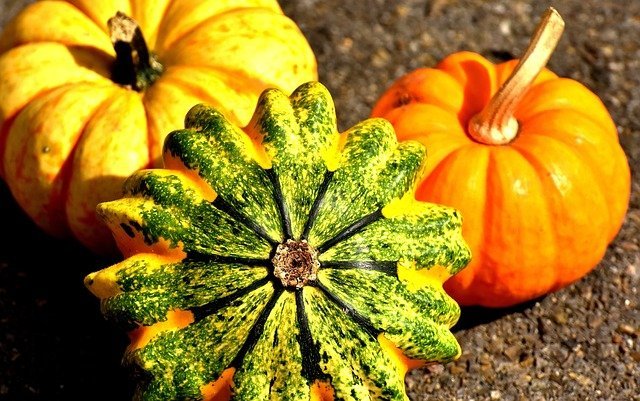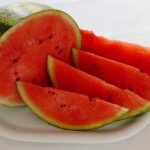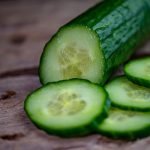
The excellent nutritional values associated with the numerous beneficial properties for the body and its health, make pumpkin an excellent vegetable, to be placed in the shopping cart at least a couple of times a week. Let’s find out better.
Pumpkin is one of the symbolic foods of the autumn season. This vegetable belongs to the Cucurbitaceae family, the same to which cucumbers, courgettes or watermelon also belong and its spread in Europe is due to the Spanish colonists, who imported it here from the 16th century onwards. In Italy it is grown mainly in some northern regions, but it is widely consumed everywhere, representing the basic ingredient of various and tasty recipes.
Types and varieties of pumpkin
There are different varieties of pumpkin, different in shape, color and size and each can have different uses in the kitchen. Here are some of the best known and most popular:
- Mantuan pumpkin: this variety of pumpkin, typical of the Mantua area, has a green skin and orange pulp. This type of pumpkin lends itself well to the preparation of tortelli, side dishes for roasts or cakes;
- Pumpkin moscata: it is a variety of French origins that has a compact pulp that is well suited to the preparation of risotto, velvety and salty dishes in general;
- Butternut squash: it is a variety of Angolsasson origin with a compact and not very sweet pulp, which is well suited to the preparation of soups and velvets;
- Violin squash: this squash, is similar in shape and size to the butternut variety and can be used in the same ways;
- Hokkaido pumpkin: it is a variety with a rounded shape with smooth orange skin, excellent for the preparation of soups and risottos;
- Long pumpkin of Naples: it is a local variety, slow food presidium, which can even exceed 20 kg in weight. It has a firm pulp, excellent for preparing pasta and cereals or soups;
- Turban gourd: this is a gourd with a characteristic turban shape that is often used for ornamental purposes. However, it has a sugary and floury pulp that is very versatile in the kitchen.
Although there are different types and forms in nature, it always maintains the same nutritional properties and the same benefits for the body. Let’s see what they are.
Pumpkin: calories and nutritional values
Despite the full and very sweet flavor, for example, pumpkin is a valid food in low- calorie diets and in those of diabetic patients, thanks to the very low carbohydrate and lipid content, offset by high percentages of fiber, vitamins and mineral salts: 100 grams in fact, pumpkin only brings about 26 calories, and this is possible due to the high water content, of which it is made up of about 90%.
From a nutritional point of view, pumpkin is a source of fiber, minerals (among which calcium, phosphorus, potassium, zinc, selenium and magnesium stand out) and vitamins, in particular of beta- carotene, precursor of Vitamin A, known for its excellent antioxidant qualities. Vitamins of group B (B1, B2, B3, B5 and B6) and Vitamin C.
Nutritional values per 100g of raw pumpkin:
- Waterfall: 91.60 g
- kcal: 26
- Proteins: 1 g
- Fat: 0.10 g
- of which saturated: –
- Carbohydrates: 6.5 g
- of which sugars: 2.76 g
- Fibers: 0.5 g
- Potassium: 340 mg
- C vitamin: 9 mg
- Glycemic index (boiled): 64
- Cholesterol: 0 g
The benefits and properties of pumpkin
Its excellent nutritional profile gives the pumpkin useful properties to support heart health, counteract constipation, insomnia and water retention. It also protects the urinary tract and has a beneficial effect on skin and hair. Now let’s see in detail all the benefits of this delicious vegetable.
✓ Prevents cardiovascular diseases
Beta-carotene is an important antioxidant that helps to counteract the onset of free radicals and, therefore, cellular aging. Furthermore, pumpkin is rich in good fats such as Omega-3, an ideal ally for the reduction of cholesterol and blood triglycerides and for the lowering of blood pressure, thus decreasing the risk of atherosclerotic plaque formation which, obstructing the arteries, facilitate the onset of strokes and heart attacks.
✓ Pumpkin against constipation
The high fiber content, combined with the very high percentage of water, give the pumpkin beneficial properties for the intestine: in particular it favors the correct functioning of intestinal transit as it modifies the consistency of the faeces and rebalances the intestinal flora. This feature is also useful in case of colitis and in the presence of hemorrhoids. The fibers also help to maintain a sense of satiety for a longer time and help to reduce the absorption of sugars in the blood. Pumpkin is a recommended food for those who want to lose weight, for those suffering from diabetes or irritable colon.
✓ Eliminates insomnia and anxiety
Magnesium is a natural muscle relaxant and, as such, facilitates muscle relaxation. Everyday life involves accumulating stress and physical fatigue: all this translates into fatigue, muscle contracture and a state of anxiety or agitation. The presence of magnesium in the pumpkin, therefore, helps muscle relaxation, bringing physical and mood benefits. In addition, pumpkin contains tryptophan, an amino acid involved in the production of serotonin, the so-called good mood hormone, useful for fighting insomnia, nervous hunger and depression.
✓ Pumpkin against water retention
The water and potassium present in the pumpkin promote diuresis and counteract fluid retention, a disorder often due to an improper or unhealthy lifestyle: unbalanced diet rich in sodium, sedentary life, poor hydration are the main culprits. The consumption of pumpkin, therefore, facilitates the body to free itself from retained liquids (as well as toxins) and to deflate.
✓ Protects the urinary tract and removes intestinal worms
Cucurbitin, a rare and precious amino acid found above all in pumpkin seeds, has strong vermifuge and antiparasitic properties and has proven to be very useful in combating urinary tract disorders, in particular prostatitis and cystitis.
✓ Nourishes and protects skin, hair and nails
Vitamins and antioxidants make pumpkin pulp an excellent beauty ally, especially in the preparation of DIY masks and creams, emollients for the body and fortifying hair and brittle nails that tend to break.
How much pumpkin to eat
Before seeing some usage tips, it may be helpful to understand how much pumpkin to eat per day. A standard serving of this vegetable is equivalent to 200 grams of edible portion and the guidelines recommend consuming at least 2 servings of vegetables per day. Therefore, when in season, we can bring the pumpkin to the table even every day, preferably alternating or combined with other seasonal vegetables (turnips, cabbage, salad, etc.), so as to further vary the diet and guarantee the body all the nutrients it needs.
Pumpkin: tips for use and storage
Nothing is really thrown away from the pumpkin, being able to eat the pulp, cooked and raw, the seeds and even the peel. Furthermore, ours is the high versatility of use in the kitchen, so you just have to experiment and use your imagination to create always new and tasty dishes.
Pumpkin can be steamed, boiled, stewed or baked in the oven. The pulp can be blended or simply mashed, after cooking, to make a nice puree to accompany food, as a side dish; centrifuged, on the other hand, gives a good juice to drink especially in the morning, on an empty stomach.
Pumpkin seeds are rinsed, dried and left or dried in the open air, or toasted in the oven for a few minutes: a handful of seeds to munch on is an excellent snack, while minced they can be used for a natural scrub for the body or in addition to salads.
The pumpkin should be kept in a cool place; after being deprived of the peel, it is preferable to keep it in the fridge. Cooked and cut into cubes, it can be frozen, contained in special bags: in this way, we will always have our favorite wellness ration available.
Pumpkin: contraindications
Pumpkin has no particular contraindications, except in the case of specific allergies to the vegetable. The seeds, unlike the pulp, have a higher calorie and lipid content so it is better not to abuse them.






